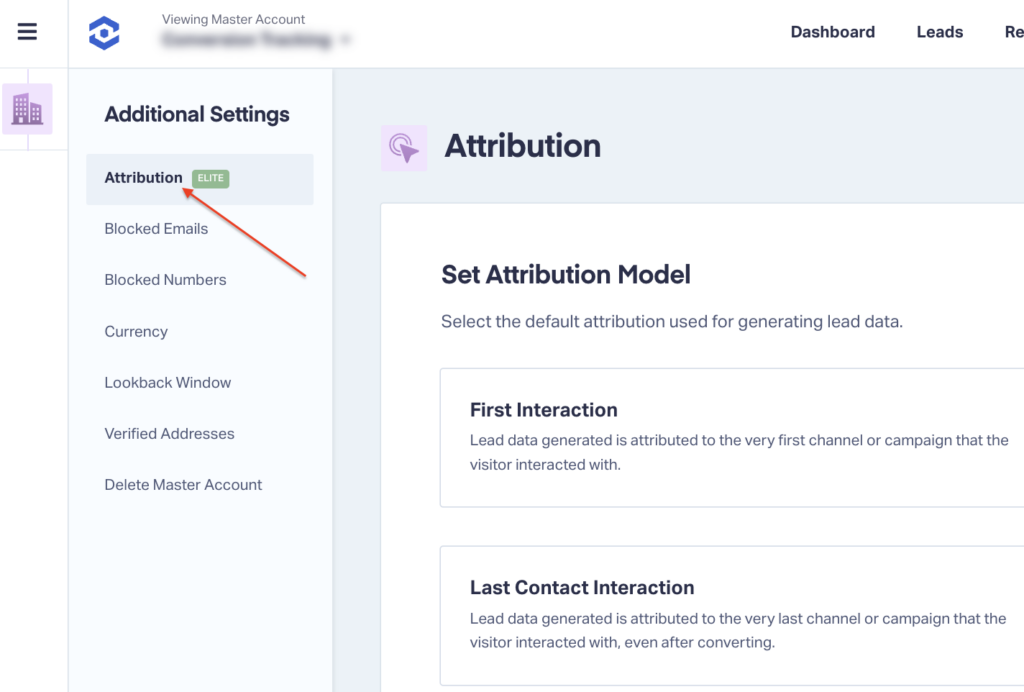
This guest post is from Kesar Long, Founder of Orbit Local.
At Orbit Local, we understand that generating high-quality leads requires a detailed understanding of the customer's journey. Whether potential customers interact with ads online or respond to offline campaigns, it’s crucial to know how each touchpoint contributes to generating leads and increasing conversions.
By using WhatConverts, we can track leads from multiple touchpoints—whether they’re engaging with Google Ads, mailers, or display ads. This allows us to see not only where leads come from but also how different channels work together to drive more calls, form submissions, and in-person visits.
What is Multi-Touch Attribution and Why is It Important in Marketing?
Multi-touch attribution is a type of attribution model that assigns value to each touchpoint in the customer journey. It helps marketers understand the impact of various channels on conversions, allowing for more informed decision-making and optimized marketing strategies to maximize lead generation and ROI.
How Does Multi-Touch Attribution Work?
Multi-touch attribution models assist businesses in understanding how different marketing campaigns and touchpoints influence customer decisions through various models, including opportunity creation and machine learning techniques that can optimize future marketing efforts.
These models assign conversion credit to touchpoints based on their impact on the customer journey and the overall conversion process. One commonly used model is the linear attribution model, which gives equal credit to all touchpoints.
On the other hand, the time decay model assigns more weight to touchpoints that are closer to the conversion event. These models provide valuable insights into how marketing efforts contribute to conversions, helping businesses optimize their strategies effectively.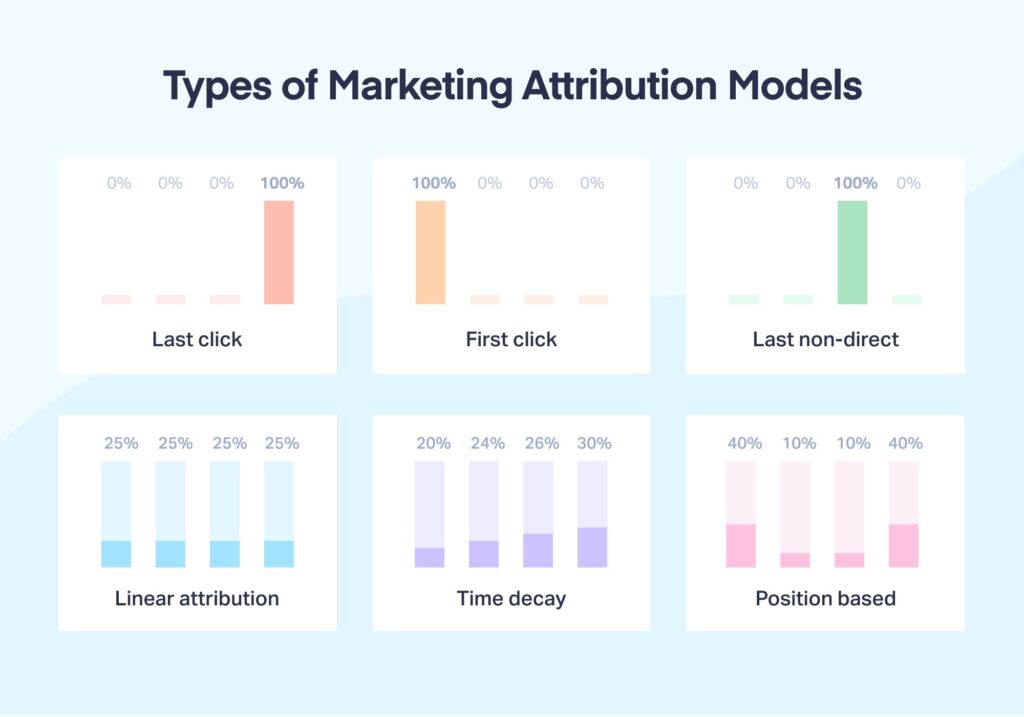
Multi-touch attribution evaluates the effectiveness of various marketing touchpoints, including the last touchpoint, in influencing a customer's decision. It analyzes individual user data across different channels, such as direct mail, online display, and paid search, to improve marketing ROI. Unlike the traditional last-click model, multi-touch attribution assigns credit to touchpoints based on how much influence they have on the customer’s journey and the final sale, enabling marketers to focus on the most influential touchpoints and optimize their strategies.
By capturing relevant marketing data from various interactions, multi-touch attribution offers a full picture of marketing performance compared to single-touch models. This detailed insight helps marketers optimize their strategies and allocate resources effectively for better results.
The Challenge: Capturing Leads Across Multiple Channels
Our clients, like the Shutters company, advertise in a variety of ways. They use Google Ads, place ads in The Home Mag, send direct mailers, and invest in programmatic display ads to reach their target audience. They found it challenging to figure out how all these channels worked together and contributed to their overall success.
Traditionally, lead data is often attributed to the last interaction, meaning the very last channel or campaign a customer interacted with before converting gets full credit. For example, a potential customer could click on a Google ad, call for a quote, and attribute the lead to Google Ads. However, this approach doesn't capture the full customer journey, which might have involved earlier interactions with other marketing efforts like mailers or display ads, and thus deserves equal credit.
The Solution: Multi-Touch Attribution with WhatConverts
WhatConverts helps track leads from all marketing channels. It shows how customers interact with ads and other marketing efforts, allowing businesses to see which strategies work best for attracting new customers.
The first interaction attribution model gives credit for a conversion to the first touch point in the customer journey. This model is useful for understanding how marketing efforts bring in new leads and create awareness about a company.
The last interaction attribution model credits a conversion to the last interaction before the customer takes action. This helps marketers see which touchpoints are most influential in driving conversions.
Multi-touch attribution is important for understanding how customers interact with different marketing channels and campaigns. This analysis helps marketers make informed decisions about where to allocate resources and how to optimize marketing strategies.
What Are the Best Touchpoints for Multi-Touch Attribution?
We discovered that while Google Ads generated the most last-touch interaction leads, other marketing efforts, like direct mailers and display ads, played a significant role in nurturing leads. Using multi-touch attribution, we were able to see that these earlier touchpoints, including the final touchpoint, were critical to driving final conversions. This insight helped us show the Shutters company how all of their marketing channels, including the last touch, worked together to increase form quotes, calls, and showroom appointments.
Marketing Touchpoints - What They Are & How to Optimize Them
Understanding the Customer's Journey through Multi-Touch Marketing Attribution
The WhatConverts attribution tool is valuable because it helps our agency and our clients understand the full customer journey. We found that many leads didn’t convert directly after seeing a Google Ad. Instead, customers often first encountered a display ad, then conducted an organic search, and finally came through Google Ads after seeing a special offer when they were ready to take action.
This understanding allowed us to improve our marketing strategy and get more new customers for our clients. For example, we found that increasing investment in branded campaigns and display ads helped our client, a Shutters company, keep the brand at the top of potential customers' minds.
When customers were ready to purchase, they often returned via Google Ads, which led to a final conversion. With this insight, we were able to ensure the Shutters company was targeting customers at every stage of their journey, increasing both lead volume and lead quality.
How To Set Up Attribution Settings In WhatConverts
Step 1. Navigate to https://app.whatconverts.com/login
Step 2. Click on the left hamburger menu.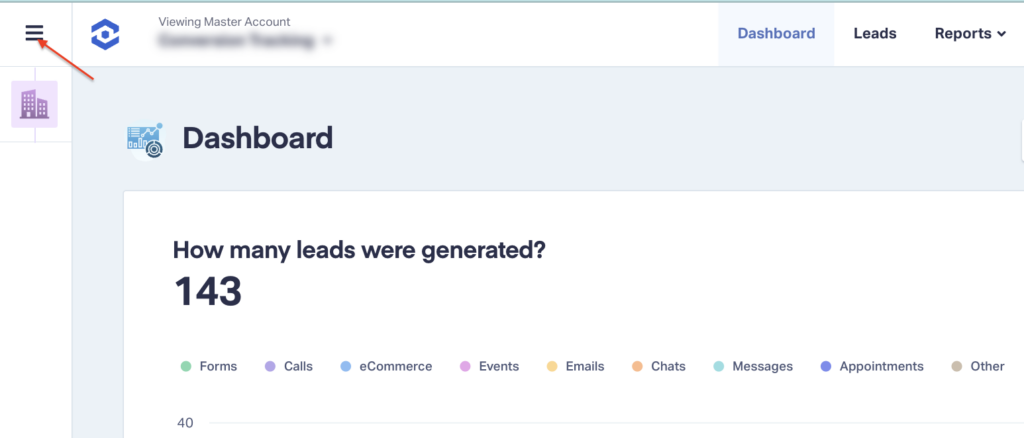
Step 3. Click "Show Settings."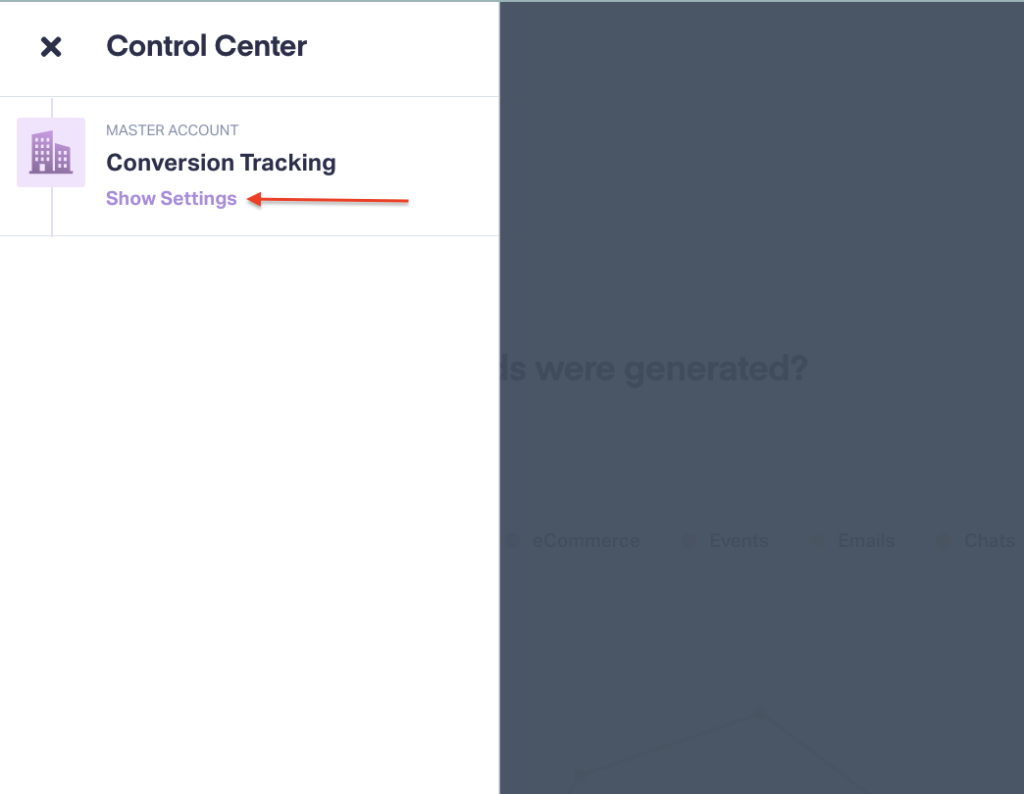
Step 4. Click "Additional Settings."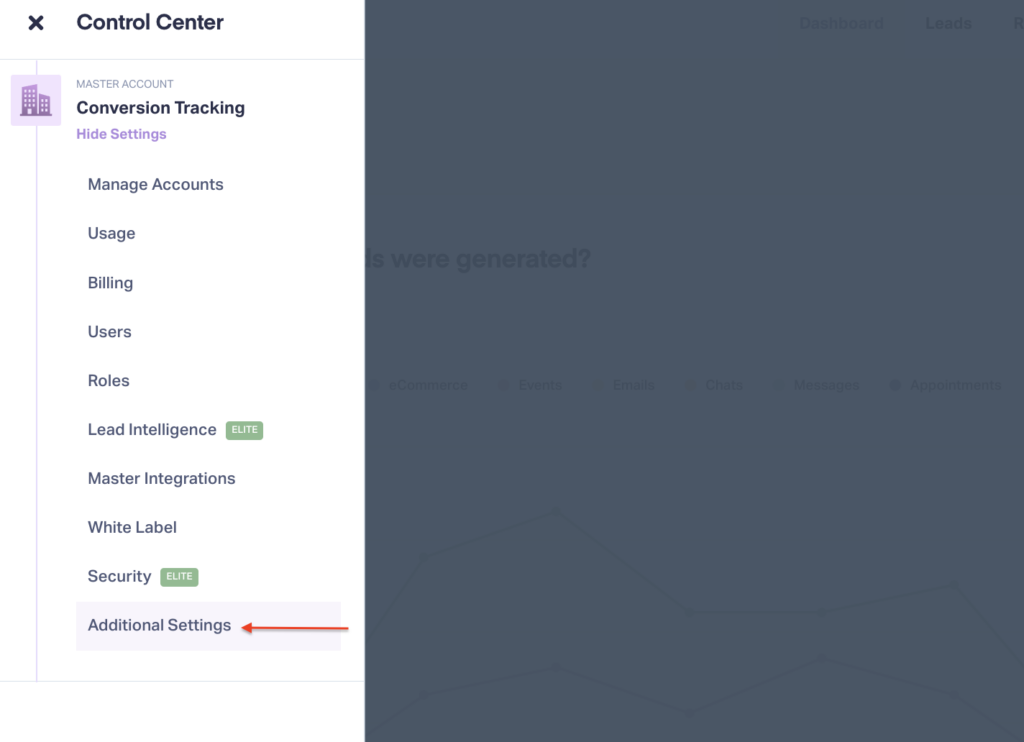
Step 6. Click "Lead data generated is attributed to the very last channel or campaign that the visitor interacted with before converting."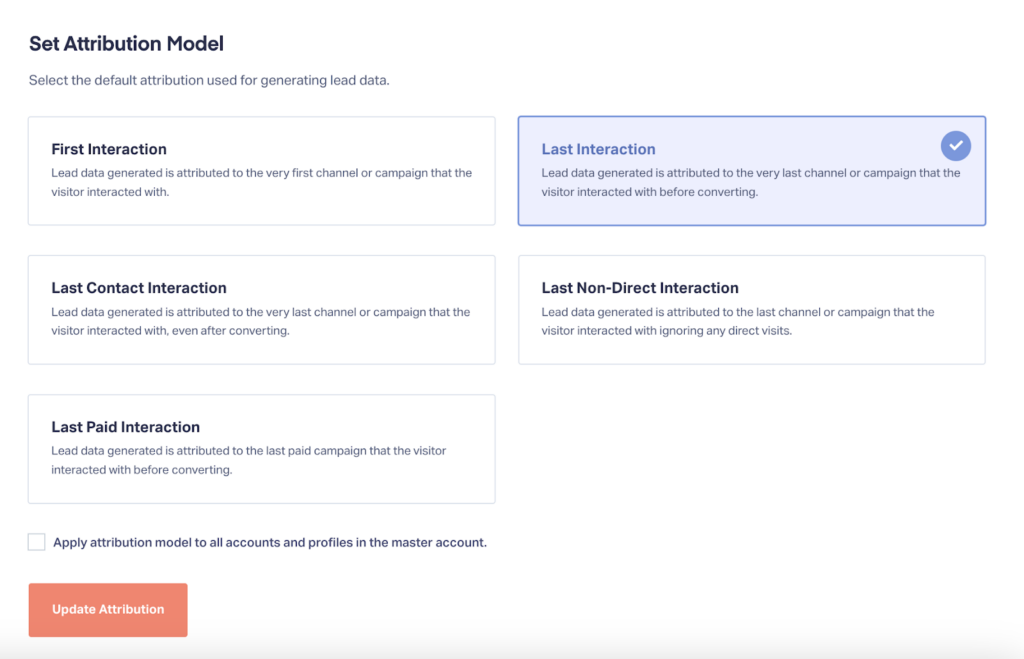
Step 7. Click "Update Attribution" to save.
Tracking Offline and Online Lead Data
In addition to digital channels like Google Ads and display ads, WhatConverts allowed us to track offline efforts, such as direct mailers and ads in The Home Mag. By assigning unique phone numbers and form tracking to these offline campaigns, we could see exactly how many calls each campaign generated.
For the Shutters company, understanding how their offline efforts contributed to overall lead generation was critical. By capturing phone calls generated from mailers and magazine ads, WhatConverts allowed us to accurately attribute lead data to each campaign and touchpoint.
The last interaction attribution model helped the Shutters company see which channels ultimately drove customers to take action, while the multitouch attribution model revealed how all their marketing efforts worked together to drive leads across different stages of the customer journey.
Boosting Lead Generation with Data-Driven Insights
Thanks to WhatConverts’ multi-touch attribution capabilities, we helped the Shutters company increase lead generation by improving the visibility of every channel’s contribution. By understanding the full customer journey, we optimized their campaigns to generate more calls, form submissions, and showroom appointments.
Google Ads continued to generate the most direct leads. Still, by using the insights from multi-touch attribution, we ensured that every marketing channel played its part in influencing ad impressions and customers. By optimizing all touchpoints in the journey—whether through programmatic display ads, direct mailers, or Google Ads—we were able to increase the number of leads coming through significantly.
Conclusion: Orbit Local’s Multi-Touch Attribution Approach
At Orbit Local, we rely on the WhatConverts attribution software feature to help our clients see the entire customer journey and attribute lead data across all their marketing efforts. Multi-touch attribution allows us to track each interaction and ensure that every channel—from Google Ads to direct mailers—gets the credit it deserves.
Understanding how every touchpoint contributes to lead generation and final conversions is critical for companies like the Shutters company to increase calls, form submissions, and showroom appointments. With WhatConverts, Orbit Local is able to provide data-driven insights that help our clients optimize their marketing strategies and generate more leads.
If you don't have a WhatConverts account yet, sign up for a 14-day free trial and get started today!
Get a FREE presentation of WhatConverts
One of our marketing experts will give you a full presentation of how WhatConverts can help you grow your business.
Schedule a Demo
Grow your business with WhatConverts






